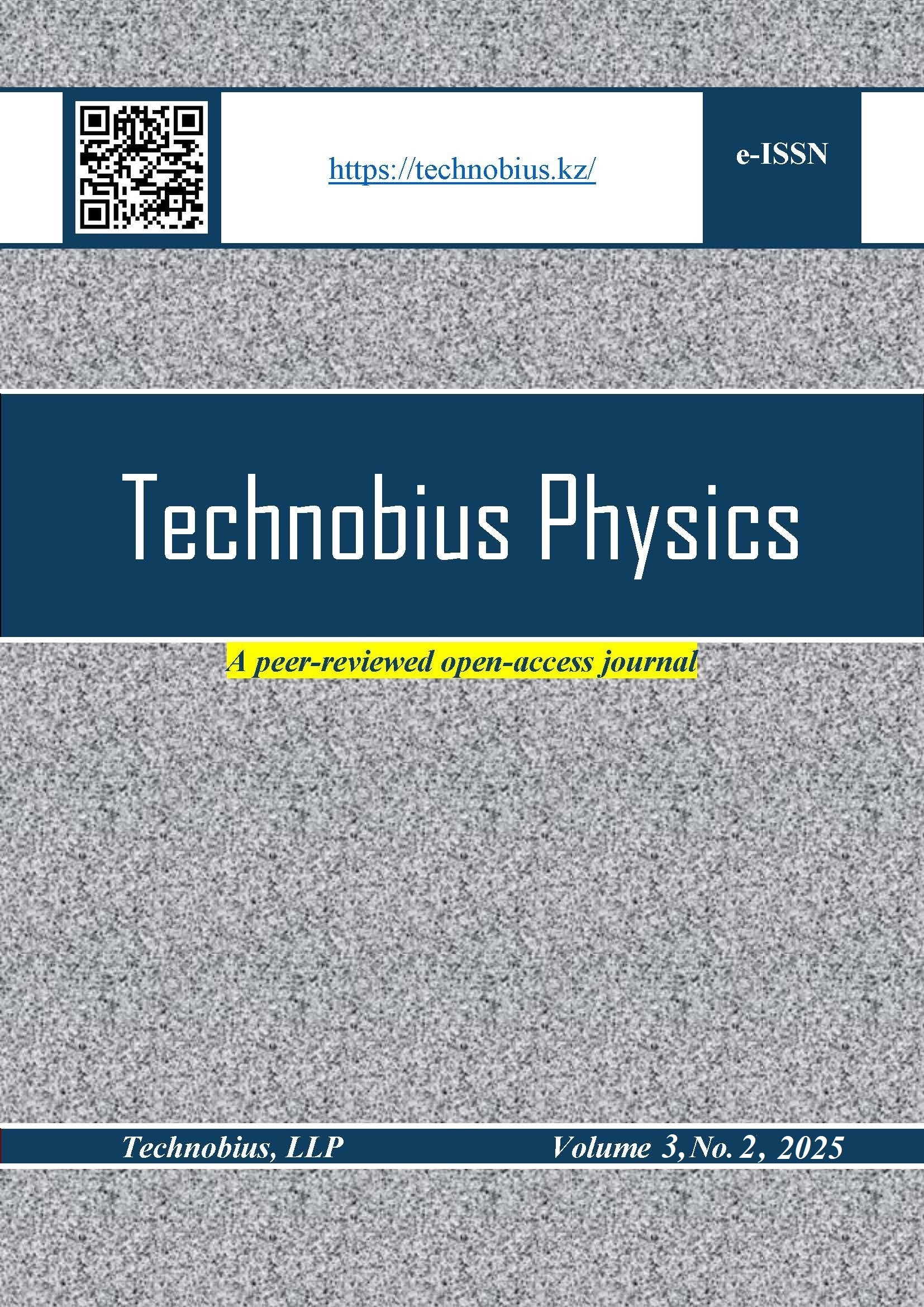Advanced characterization of atomic terraces and electronic topography of graphite using STM in constant current and constant height modes
DOI:
https://doi.org/10.54355/tbusphys/3.2.2025.0033Keywords:
scanning tunneling microscopy, graphite, atomic terraces, constant height mode, tunneling current, LDOSAbstract
This study presents a high-resolution scanning tunneling microscopy analysis of highly ordered pyrolytic graphite, aimed at quantitatively characterizing atomic-scale surface features using both constant-current and constant-height imaging modes. Building upon previous work, the investigation focuses on step height measurements and lattice parameter evaluation across multiple scan areas. STM images captured in constant-current mode revealed clear atomic terraces and hexagonal lattice patterns, with step heights measured at approximately 332.2–333.9 pm, closely matching the theoretical monolayer thickness of graphite. Interatomic distances between nearest neighbors (140 pm) and atomic rows (245–248 pm) were also consistent with known lattice parameters. In constant-height mode, tunneling current profiles were recorded along line scans of 1.25 nm and 20.7 nm. These profiles exhibited periodic current modulations corresponding to atomic corrugation, with amplitude variations of approximately 0.2 nA. The data confirm the STM’s capacity to resolve both vertical and lateral atomic features with high precision. The study demonstrates the effectiveness of combining imaging modes to extract complementary structural and electronic information from layered crystalline surfaces. The results contribute a validated reference framework for STM calibration and underscore the technique’s reliability in distinguishing atomic-scale topography and local electronic contrast.
Downloads
Metrics
References
S. Yngman et al., “GaN nanowires as probes for high resolution atomic force and scanning tunneling microscopy,” Rev. Sci. Instrum., vol. 90, no. 10, Oct. 2019, doi: 10.1063/1.5122791.
D. A. C. Brownson, R. V. Gorbachev, S. J. Haigh, and C. E. Banks, “CVD graphene vs. highly ordered pyrolytic graphite for use in electroanalytical sensing,” Analyst, vol. 137, no. 4, pp. 833–839, Feb. 2012, doi: 10.1039/C2AN16049H.
A. C. Campbell, P. Jelínek, and P. Klapetek, “Study of uncertainties of height measurements of monoatomic steps on Si 5 × 5 using DFT,” Meas. Sci. Technol., vol. 28, no. 3, Jan. 2017, doi: 10.1088/1361-6501/AA5075.
E. V. Sysoev and A. V. Latyshev, “Measuring the Interatomic Distance in a Silicon Crystal Lattice Using an Optical Scanning Interferometer,” Optoelectron. Instrum. Data Process., vol. 57, no. 6, pp. 561–568, Dec. 2021, doi: 10.3103/S8756699021060157.
M. Zhao et al., “Insight into STM image contrast of n-tetradecane and n-hexadecane molecules on highly oriented pyrolytic graphite,” Appl. Surf. Sci., vol. 257, no. 8, pp. 3243–3247, Feb. 2011, doi: 10.1016/j.apsusc.2010.10.150.
T. Carstens et al., “Combined STM, AFM, and DFT study of the highly ordered pyrolytic graphite/1-octyl-3-methyl-imidazolium bis(trifluoromethylsulfonyl)imide interface,” J. Phys. Chem. C, vol. 118, no. 20, pp. 10833–10843, May 2014, doi: 10.1021/JP501260T.
H. Ma et al., “Scanning tunneling and atomic force microscopy evidence for covalent and noncovalent interactions between aryl films and highly ordered pyrolytic graphite,” J. Phys. Chem. C, vol. 118, no. 11, pp. 5820–5826, Mar. 2014, doi: 10.1021/JP411826S.
M. Mustafin, “Probing molecular architectures and interactions with scanning tunneling microscopy on graphite and arachidic acid functionalized surfaces,” Technobius Phys., vol. 2, no. 2, pp. 0010–0010, Apr. 2024, doi: 10.54355/TBUSPHYS/2.2.2024.0010.
Downloads
Published
How to Cite
Issue
Section
Categories
License
Copyright (c) 2025 Medet Mustafin

This work is licensed under a Creative Commons Attribution-NonCommercial 4.0 International License.








